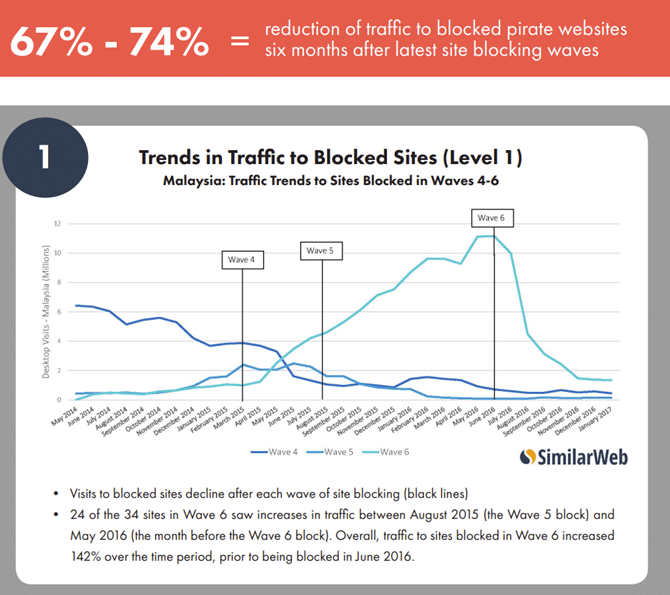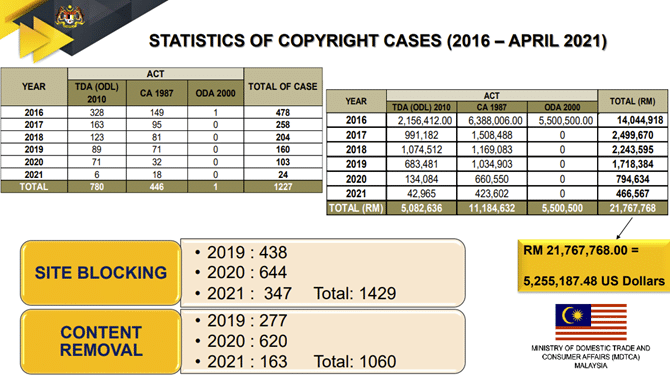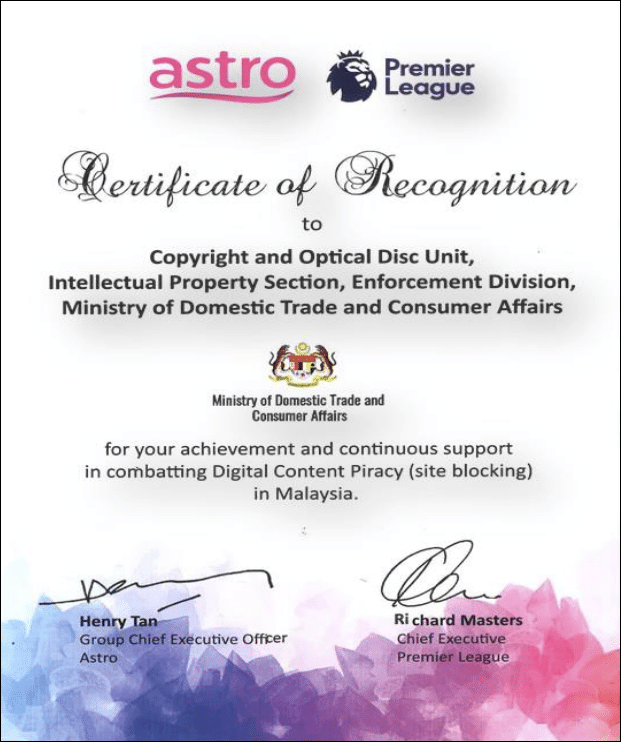3,682 Pirate Sites Blocked to Protect Creators; More Importantly, Did it Work?
With considerable encouragement from Hollywood and affiliated anti-piracy groups, in 2021 the Malaysian government stepped up its site blocking measures. An official statement published this week reveals that between 2021 and November 2024, a total of 3,682 pirate sites were blocked to prevent exploitation of local content. Interesting, perhaps, but after 15 years of effort, did site-blocking actually work and, if so, who benefited, and how? From: TF, for the latest news on copyright battles, piracy and more.

 Excellent infrastructure and limited anti-piracy action made Malaysia a popular hosting location back when torrent sites were in their prime.
Excellent infrastructure and limited anti-piracy action made Malaysia a popular hosting location back when torrent sites were in their prime.
Then seemingly out of nowhere, in 2008/2009 the government began shutting down popular sites including Extremebits, Rapthe, Superfundo and later, LeechersLair. One BitTorrent tracker owner discovered to his surprise that a device was quietly gathering data from the site’s server.
At the time widely attributed to the Malaysian Communications and Multimedia Commission, these physical shutdowns were followed in 2011 by something new. After previously promising never to censor the internet, the Commission announced the imminent blocking of a number of pirate sites, including thepiratebay.org, megaupload.com, megavideo.com, movie2k.to, putlocker.com, and several others.
Effectively a gallery of hand-picked Hollywood targets, in hindsight the list could’ve been seen as a statement of intent. Few of the sites survived long enough to experience much blocking, Megaupload in particular.
No Turning Back
With blocking increasingly common, in 2017 the MPA published a report, titled How Site Blocking in Malaysia Has Significantly Reduced Online Piracy. The study claimed that six months after the completion of six site-blocking waves, traffic to blocked pirate sites had decreased somewhere between 67% to 74%.

Despite the reported success against blocked sites, success against the unblocked sites quickly meeting demand required even more blocking. The next wave of success and the subsequent and inevitable rise of other unblocked sites kept Malaysian authorities busy; in 2019 (438 sites), 2020 (644), and in 2021 (347).
Whether some or all of these ‘sites’ were clones, mirrors, or proxies, or potentially just new domains, wasn’t revealed. In total 1,429 ‘sites’ were added to the blocklist, but that was only the beginning.

While pirate site blocking has been around for almost 20 years, key aspects of this enforcement measure never change. The history of site blocking in Malaysia shows the same pattern and may even provide a textbook example.
1. Initial Blocking Request Never a One-Off, But it Will Succeed
The SOPA disaster in the United States showed that acceptance of site blocking measures can’t be taken for granted. Opinions vary, but two key mistakes haven’t been repeated since: 1) encouraging mass opposition by demanding too much, too early and 2) misjudging the importance of timing.
After appearing on the USTR’s Priority Watch List in 2000 and 2001, Malaysia quickly showed “significant improvement” and was moved to the less oppressive Watch List a year later. For the next decade the USTR found no reason to change the status quo but after blocking some of the world’s most popular sites in 2011, Malaysia was removed from the Watch List the very next year.
The MPA’s 2017 report cited earlier suggested that subsequent site-blocking was another success for Malaysia. Failure at that stage would’ve been unthinkable and could’ve fatally dampened enthusiasm for any further blocking. After so much effort, that was never likely to happen.
Additional Requests Always Follow
The blocking of 1,429 additional ‘sites’ in 2019/20/21 suggests that ‘success’ in 2017 triggered a massive increase in blocking requests.
A study published by the Asia Video Industry Association (AVIA), which counts the MPA’s members among its own, reported significant ongoing success in 2020. The details appeared in a government presentation, Enforcement of Intellectual Property Rights in Malaysia, and were just as impressive.

In summary then, we have a background of blocked pirate sites losing between 67%-74% of their traffic (MPA/2017), and a 64% decline in Malaysian consumers accessing pirate streaming sites in 2020. If we assume that new copyright law, providing for up to 20 years in prison for online pirates, acted as a deterrent following its introduction during 2021, Malaysia should’ve been well on its way to even greater success.
Unfortunately, the rule that success always leads to more blocking requests, was confirmed in a Malaysian government announcement this week.
Over 3,600 Sites Offering Pirated Content Blocked Since 2021
According to a Bernama report, the latest data made available by the Malaysian government show that a total of “3,682 illegal websites offering and spreading pirated content” were blocked between 2021 and November 2024.
Minister of Domestic Trade and Cost of Living, Datuk Armizan Mohd Ali, said his department (KPDN) carried out the blocking in collaboration the Malaysian Communications and Multimedia Commission (MCMC) and local ISPs.
“This is part of the ministry’s commitment to protecting local creative works from being exploited illegally,” he said. “KPDN will continue to strengthen cooperation with various agencies involved in efforts to address digital piracy issues.”
With the total number of sites blocked since 2019 now at 5,100+, the most important question is whether these considerable blocking efforts have had a positive effect and if so, what were they, and who benefited?
Based solely on the somewhat confusing figures presented above, in theory piracy should’ve been eliminated given the reported collapse in pirate site attendance. While that’s unlikely, a progress report on the stated aim of protecting local content shouldn’t be completely impossible.
In the meantime, a certificate of appreciation signed by the Premier League must count for something.

From: TF, for the latest news on copyright battles, piracy and more.
















![What’s new in Android’s January 2025 Google System Updates [U: 1/13]](https://i0.wp.com/9to5google.com/wp-content/uploads/sites/4/2020/07/google_play_services_1.jpg?resize=1200%2C628&quality=82&strip=all&ssl=1)

